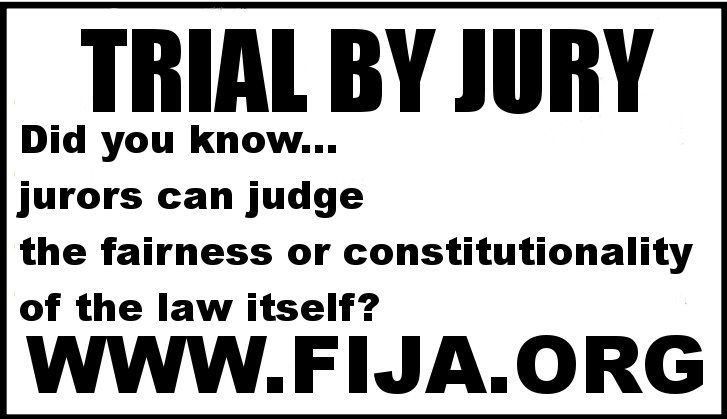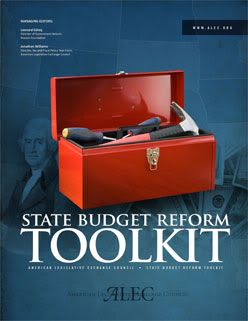
Sallie Taylor presented information about the Blue Zones Project to the Franklin Town Council at their regular meeting for January 2019. The above video is the entire presentation and exchange with the board. The goal of the presentation was to get the members of the Franklin Town Council to attend a presentation currently scheduled for the end of June.
Presentation on Blue Zones by Sallie Taylor
Recorded by Macon Media on Jan 7, 2019
Runtime: 25 minutes 19 seconds
The Franklin Town Council held their regular meeting for the month of January 2019 on January 7th in the town hall. This is an excerpt from that meeting, featuring a presentation on Blue Zones by Sallie Taylor.
Here is the text, translated by Optical Character Recognition software that converted the scanned image provided in the meeting agenda into a searchable document.
THE BLUE ZONES®
Blue Zones® are places where people live measurably longer, happier lives with lower rates of chronic diseases and a higher quality of life. Scientists found five Blue Zones in different parts of the world, and Dan Buettner documented these findings in his New York Times best-selling book, The Blue Zones: Lessons for Living Longer from the People Who Have Lived the Longest. Physically, socially, and emotionally these people are living their lives longer and better.
This research, coupled with an eight-year worldwide longevity study, has been used to develop tools and programs that help people live longer, healthier, and happier lives by optimizing their surroundings to best replicate the nine principles the Power 9® observed in the original Blue Zones areas. This public-private collaboration around a common approach makes the Blue Zones Project® initiative unique. Blue Zones Project deploys a unifying campaign that drives permanent changes by engaging the business community (employers, grocery stores, restaurants), government entities, non-profits, schools, the faith-based community, the media, and individual citizens.
The Blue Zones Project approach to improved well-being is to enhance the environment within critical sectors of the community by implementing evidence-based best practices. Coupled with an extensive community engagement and marketing program and active support from civic and faith-based leaders, Blue Zones Project drives heightened awareness, support, tools, and programs for individuals and community organizations to improve well-being.
To date, forty-two communities in nine states (including Ft. Worth, Texas, and Naples. Florida) have undertaken this process with varying time frames for implementation. The longest-tenured community is in its seventh year of involvement in the Project and implementation of the model. Blue Zones Project is a long-term initiative designed to drive value over a 3-7 year period, depending on the size of the community.
TIE BLUE ZONES PROJECT DIFFERENCE
Blue Zones Project takes a unique, systematic approach to improving well-being focusing on our "life radius." By optimizing the settings where we routinely spend our time, we make healthy choices easier and naturally adopt healthier behaviors together as a community.
PEOPLE
We engage people to optimize their homes and social environments with the Personal Pledge; provide opportunities to discover their purpose; facilitate volunteer experiences to connect with community, and offer programs that deliver support through healthy social networks.
PLACES
We orchestrate a critical mass of worksites, schools, restaurants, grocery stores, and faith-based organizations across the community to optimize environments toward healthy living. By working together to make permanent or semi-permanent changes, healthy choices become the easy choices to make in all the places people live, work, learn, and play.
POLICY
We work with city leaders to suggest evidence-based best practices to impact food policy, tobacco policy, and the built environment. By improving community infrastructure and public policies, we maximize residents' abilities to move naturally, connect socially, access healthy food, and improve quality of life.
A PARTNERSHIP THAT PAYS OFF
1. Measurably increase well-being as quantified by Gallup: The Gallup-Healthways Well-Being Index® is the gold standard of population health. This project aims to measure and statistically improve well-being, annually reporting that well-being to stakeholders and media.
2. Lower healthcare costs: Blue Zones Project measurably lowers smoking rates and average BMI, while increasing physical activity and healthy eating, which results in lower healthcare and claims costs.
3. Improve productivity: People with higher well-being cost less and perform better. Blue Zones Project works with employers, organizations, and worksites to make tangible and measurable changes to their environment, thus supporting and improving well-being.
4. Position your company as an innovator and leader in preventive health: Blue Zones Project has a strong reputation for generating local and national press for marshaling innovation, creating healthier environments, and attracting visitors and businesses to communities.
5. Attract grants: Blue Zones Project work meets criteria for dozens of national, state, and local grants. Our demonstration communities have been extremely successful in attracting grants for healthier schools, built environments, food policy, active living, and other community development opportunities.
6. Improve the living environment for the long run: With a focus on sustainable environmental and social change, our programs draw from more than two hundred evidence-based interventions designed to break down silos, maximize collective impact, and yield benefits long after our tenure in the community.
7. Boost economic vitality: Blue Zones Project has been shown to attract new businesses to the area, increase the tax base, drive economic development, increase property values, generate new housing starts, and attract grants, gifts, and funding.
THE POWER 9®: Nine healthy lifestyle habits shared by people who've lived the longest
1. Move naturally
The world's longest-lived people don't pump iron, run marathons or join gyms. Instead, they live in environments that constantly nudge them into moving without thinking about it. They grow gardens and don't have mechanical conveniences for house and yard work.
2. Purpose
The Okinawans call it "Ikigai" and the Nicoyans call it "plan de vida;" for both it translates to "why I wake up in the morning." Knowing your sense of purpose is worth up to seven years of extra life expectancy.
3. Down Shift
Even people in the Blue Zones experience stress. Stress leads to chronic inflammation, associated with every major age-related disease. What the world's longest-lived people have that we don't are routines to shed that stress. Okinawans take a few moments each day to remember their ancestors, Adventists pray, Ikarians take a nap and Sardinians do happy hour.
4. 80% Rule
"Ham hachi bu" the Okinawan, 2500-year old Confucian mantra said before meals reminds them to stop eating when their stomachs are 80 percent full. The 20% gap between not being hungry and feeling full could be the difference between losing weight or gaining it. People in the Blue Zones eat their smallest meal in the late afternoon or early evening and then they don't eat any more the rest of the day.
5. Plant Slant
Beans, including Cava, black, soy and lentils, are the cornerstone of most centenarian diets. Meat mostly pork is eaten on average only five times per month. Serving sizes are 3-4 oz., about the size of deck or cards.
6. Wine @ 5
People in all Blue Zones (except Adventists) drink alcohol moderately and regularly. Moderate drinkers outlive non-drinkers. The trick is to drink 1.2 glasses per day (preferably Sardinian Cannonau wine), with friends and/or with food. And no, you can't save up all weekend and have 14 drinks on Saturday.
7. Belong
All but five of the 263 centenarians we interviewed belonged to some faith-based community. Denomination doesn't seem to matter. Research shows that attending faith-based services four times per month will add 4-14 years of life expectancy.
8. Loved Ones First
Successful centenarians in the Blue Zones put their families first. This means keeping aging parents and grandparents nearby or in the home (It lowers disease and mortality rates of children in the home too.). They commit to a life partner (which can add up to 3 years of life expectancy) and invest in their children with time and love (They'll be more likely to care for you when the time comes).
9. Right Tribe
The world's longest-lived people chose—or were born into—social circles that supported healthy behaviors, Okinawans created "moais"—groups of five friends that committed to each other for life. Research from the Framingham Studies shows that smoking, obesity, happiness, and even loneliness are contagious. So the social networks of long-lived people have favorably shaped their health behaviors.
INITIAL EFFORTS
Initial efforts are underway to measure community interest in pursuing the Blue Zones initiative as set out by their comprehensive development plan. Phase I in this initiative is a Community Leadership Presentation for which key stakeholders and community leaders are being identified and contacted within Highlands, Cashiers, Sylva and Franklin. The purpose of the presentation is to educate, inform and inspire these stakeholders with Blue Zones Project (BZP) research and value, gauge leadership commitment and support to pursue BZP in the community. This presentation has been funded by a private individual. If community leaders are in mutual agreement, then Phase 2, the Community Development Process, would start
Meeting coverage Ends
Additional Information about Blue Zones
Below is a video from TED-Ed of Dan Buettner [Wikipedia] giving a presentation in 2013 about his Blue Zones [Wikipedia]. [Blue Zone Website]
Video TED-Ed "How to live to be 100+ featuring Dan Buettner
Description: To find the path to long life and health, Dan Buettner and team study the world's "Blue Zones," communities whose elders live with vim and vigor to record-setting age. In his talk, he shares the 9 common diet and lifestyle habits that keep them spry past age 100. (Filmed at TEDxTC.)
Talk by Dan Buettner.
Below is a recent video from the Blue Zones Project highlighting Fort Worth Texas.
Video Blue Zones Project - Fort Worth
Published on Dec 3, 2018
Fort Worth, Texas, is now a certified BLUE ZONES Community®, the biggest in the country. But the bigger news is we’re also BETTER. Since 2014, Fort Worth has undergone a neighborhood by neighborhood transformation, improving well-being through permanent changes to our built environment, policy, and social networks. More than 400 organizations and 88,000 people joined the movement to make it happen.
Below is a video from The Aspen Institute
Video Blue Zones: Secrets of a Long Life
Published by The Aspen Institute on Mar 1, 2016
Presented by the Murdock Mind, Body, Spirit Series. Featuring Tony Buettner, national spokesperson and senior vice president of business development at Blue Zones, an organization that puts the learnings of the world's longest-lived people to work in cities and communities across the country. As the lead on all Blue Zones Community projects, Tony helps build partnerships between state agencies, community leaders, and employers to bring health and longevity initiatives to each community’s citizens.
And one more presentation by Dan Buettner at another location in 2016
Video Dan Buettner: Blue Zones: The Secrets of a Long Life
Published by St. Luke's Wood River Foundation on Aug 6, 2015
What People are Saying or Reporting About the Blue Zones
Slide Share "Secrets from the Blue Zones" [LINK]
Macleans "How ‘blue zones’ offer secrets for long lives and shorter ones, too" [LINK]
Mission.org on Medium "What’s the Truth About the Blue Zones?" [LINK]
Post and Courier "An expensive wellness project is moving forward in Charleston. But cost and funding are a secret." [LINK]
Scientific American "Blue Zones: What the Longest-Lived People Eat (Hint: It’s Not Steak Dinners)" [LINK]
News-Press "Blue Zones' Buettner explores longevity" [LINK]
STATIN NATION "Did Dan Buettner make a Mistake with his Blue Zones?" [LINK]
The New American "U.S. Communities Targeted for "Blue Zone" Social Engineering" [LINK]
New York Times "My Dinner With Longevity Expert Dan Beuttner (No Kale Required)" [LINK]
The Guardian "Ethical questions raised in search for Sardinian centenarians' secrets" [LINK]
Food Science Institute "What is the Blue Zones Project?" [LINK]
The Atlantic "The Next Gluten: Plant proteins called lectins are an emerging source of confusion and fear" [LINK]
NPR "Can 'Blue Zones' Help Turn Back the Biological Clock?" [LINK]
CROWDFUNDING OR DAY SPONSORSHIP OPPORTUNITIES
If you receive value from what Macon Media provides to the community, please consider becoming a supporter and contribute at least a dollar a month. Those who support Macon Media with at least a dollar a month receive early access to video of some events and meetings before they are made public on the website. Videos and news involving public safety are not subject to early access.
Patreon Subscriber History May 2014 to Present
If you have a business or event you are interested in sponsorship opportunities or underwriting coverage, send an email to editor@MaconMedia.com for more information. Serious inquiries only.
Thank You to the people who have been sending in donations and those businesses who are underwriting coverage of news and events. You have kept Macon Media online.
Published at 12:01 am on January 9, 2019































0 comments :
Post a Comment